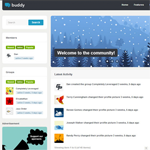Fees are a necessary evil of receiving payments online. There are very few solutions online that offer low transaction fees. That’s a lie – there are alternative payment solutions out there that offer fair transfer fees. The problem is that very few people are using them.
In the world of freelancing, PayPal is the de facto payment system for freelancers and website owners. The de facto current is, of course, US dollars.
What many Americans don’t realise is that when people outside of the USA accept payments in US dollars, we lose a lot of money. We get charged the same fees as Americans do, but we also get charged a high conversion rate.
The more money you accept, the more money you lose. For example, when I sold WP Mods for $80,000 through Escrow, I lost a few thousand dollars because of the terrible exchange rate. An American who sold a website for $80,000 like me would automatically be two or three thousand dollars richer because they would not have to pay currency conversion fees.
PayPal Fees are Very High
PayPal charges a lot to use their service. In the UK, they charge 3.4% + 20 pence per transaction. They also charge a 0.5% cross border fee for international payments and a further 2.5% fee above the market exchange rate for converting US dollars to UK pounds.
Unfortunately, there is little you can do to avoid this additional conversion fee. The only way for a British PayPal user to do it is to have an US dollar bank account tied to their account. However, I have read that they do not allow this anymore as it loses them money.
The only way to avoid a conversion fee is to charge customers in your native currency. For me, that means charging everyone in UK pounds, whether it be members of Rise Forums, or a freelancing client of mine.
I must admit that I am considering charging people in UK pounds as it is sickening to lose a further 2.5% in fees on top of the already high payment fees of PayPal. This would save me thousands of dollars every year. Though I know that US dollars is what people generally use within the internet marketing world; and charging people in a different currency might put some buyers off.
An Example of How Much I Lose
I was speaking about this issue to a client last night. I do not think he realised that people outside of the USA get charged for converting US dollars to their local currency.
To illustrate my point about fees, I showed him the fees taken for my last four payments.
- $97 paid to my account – Fee of $4.08. I received $92.92. Fee percentage = 4.2%
- $150 paid to my account – Fee of $7.65.I received $142.35. Fee percentage is 5.1%.
- $9.99 paid to my account – Fee of $0.69. I received $9.30. Fee percentage is 6.9%.
- $1,137 paid to my account – Fee of $44.64. I received $1,092.36. Fee percentage is 3.9%.
These figures do not take into account the additional 2.5% conversion fee I have to accept when actually cashing in my money.
- $97 paid to my account – Fee of $4.08. I received $92.92. Fee percentage = 4.2%. Conversion fee is $2.32. Total received = $90.60. Total fee = $6.40. Total fee percentage = 6.60%
- $150 paid to my account – Fee of $7.65. I received $142.35. Fee percentage is 5.1%. Conversion fee is $3.56. Total received = $138.79. Total fee = $11.21. Total fee percentage = 7.47%
- $9.99 paid to my account – Fee of $0.69. I received $9.30. Fee percentage is 6.9%. Conversion fee is $0.23. Total received = $9.07. Total fee = $0.92. Total fee percentage = 9.21%
- $1,137 paid to my account – Fee of $44.64. I received $1,092.36. Fee percentage is 3.9%. Conversion fee is $27.31. Total received = $1,065.05. Total fee = $71.95. Total fee percentage = 6.33%
As you can see, I am losing a lot of money by using PayPal. The above figures do not even take into account the additional 0.5% cross border fee that is charged!
The $150 payment above has a slightly higher fee that expected. From reading PayPal’s fees policy, it looks like I am being charged even more because the buyer paid all or part of the payment using a debit card or credit card. Kind of sucks to lose money because of the way that someone else funds their account; though that is what you need to deal with when using PayPal.
Between six and seven percent is lost in most transactions. The fee for my $9.99 payment is relevant to me as that is the cost of a monthly membership to Rise Forums. 9.21% is a high fee to pay, whatever way you look at it. I am losing close to a dollar with every $9.99 payment. I could reduce this fee by charging members in UK pounds.
PayPal is Too Popular
It is not the fact that there are not many alternatives to PayPal out there. Solutions such as Stripe charge 2.4% and 20 pence per transaction. Their conversion rates are 2%. That drops the total fee from at least 6.315% (PayPal) to 4.352% (Stripe).
If you have a good working relationship with a client, you can also asked to be paid directly. This allows you to save even more money, though neither buyer or seller has any real protection (which is why you need a good relationship). Solutions such as TransferWise only charge 1% for sending money abroad.
The problem is that many clients are reluctant to send payments using any service but PayPal. So what do we do? We grit our teeth and accept a large percentage of our income going to a large behemoth such as PayPal.
PayPal’s fees page claims it is “Straightforward and no surprises”. With some countries suffering from 4% currency conversion rates, and additional cross border payments costing up to another 2% if funded via PayPal and up to 7.4% if funded by a credit card; PayPal is anything but straightforward. This means that customers from some countries will lose up to 15% in fees.
Their fees are sneaky and purposely overcomplicated so that customers cannot see exactly what they are being charged for. Obviously, I am aware that banks always charge a fee of 1% or 2% for converting currencies; however it is a bitter pill to swallow after being charged already.
Sadly, due to my love of travel, I am hurt by fees again. I am heading over the Colombia a week today. Every time I use the bank I will be charged a poor conversion rate and around seven or eight dollars for using the bank’s ATM. I must admit that when I sit down and think of how much of my income is lost to banks and payment services, I get very frustrated.
What Can You Do to Avoid Such High Fees?
The only sure fire way to avoid high conversion fees is to only receive money in your local currency. If you are involved in internet marketing, that simply is not possible.
I do have the power to charge my freelancing clients in UK pounds and I could charge members or Rise Forums in UK pounds too. It is something I might do so that I do not have to suffer conversion fees and poor exchange rates. However, the vast majority of affiliate programs pay in US dollars. As a result, these high fees are unavoidable to anyone who makes money through affiliate marketing.
My opening sentence in this post was that fees are a necessary evil of receiving payments online. That remains the case. PayPal is very easy to use and I have been fairly happy with the quality of their telephone support (as long as you don’t go crazy during the automated question and answer section).
What I am not happy about is how much they charge me for receiving payments. The problem is that PayPal is used by almost everyone and many clients are reluctant to use other services. So what’s the alternative?
TransferWise is one good option. They were created for people who send money abroad regularly. They note that banks and other payment services normally charge around 5% in upfront and hidden fees but that they charge eight times less. More Transferwise info can be seen on MoneyTransferComparison for a breakdown on fees.
Again, the biggest problem with TransferWise is convincing others to use it. People are so used to using PayPal for doing business that they are reluctant to give anything else a try.
As always, I’d love to hear your thoughts on this issue.
Kevin

